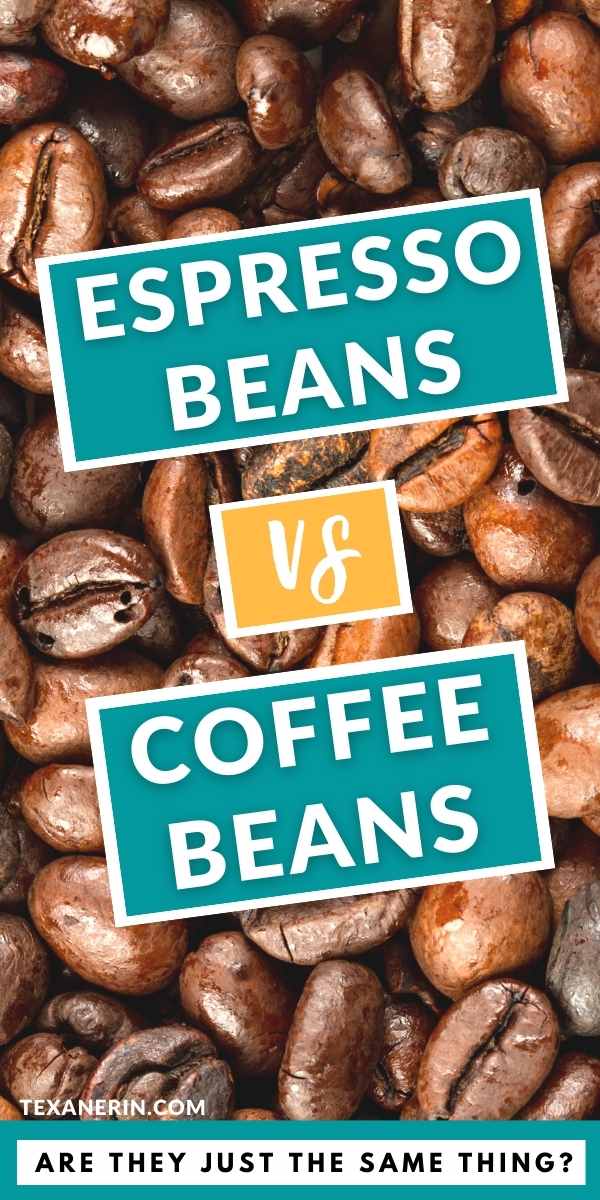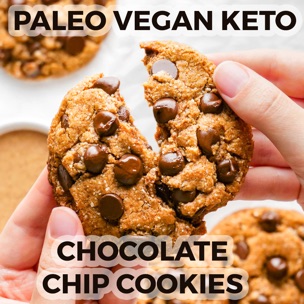Espresso beans vs coffee beans – are espresso beans really just coffee beans? They’re more or less dark roast coffee beans, but read on to find out more!
You might have seen packages of coffee beans labeled as espresso beans and thought they must be different than regular coffee beans. I know I was confused because, in actuality, the espresso bean is a coffee bean.
The difference between espresso beans and light or medium roast coffee beans is in blending, roasting, grinding and concentration.
Espresso isn’t a type of coffee bean but a dark roast technique used in preparing coffee beans to make a concentrated shot of coffee. So espresso can mean a way of brewing coffee or the shot of robust coffee after brewing.
But then why are coffee beans labeled as espresso beans?
If it says espresso on the package, it’s because that’s how the roaster recommends consuming the coffee. It’s a marketing tool that helps people know what to buy.
You can use espresso beans (so, dark roast coffee beans) to make regular coffee but if you use light or medium roast coffee beans to make espresso, the outcome will most likely be tart and sour and won’t give you that dark, full-bodied, rich taste you would expect from an espresso. There are, of course, exceptions, but this is generally true.
So if you’re making something like this Espresso Martini with Baileys, any leftover espresso beans can easily be turned into a smooth morning cup of coffee.
Are espresso beans different than dark roast coffee?
No. They’re the same thing.
This can be confusing, especially because some espresso recipes call for espresso beans and some for coffee beans.
Beans that are labeled as espresso are usually dark roast (sometimes medium roast), and if you buy it pre-ground, it will almost definitely be a super fine grind.
Dark roast coffee beans (so, espresso beans) have more natural oils that give you that dark oily sheen. This lends to less acidity and a fuller-bodied taste.
Light roast beans are mostly used for slower extraction methods like drip coffee, whereas a dark roast like an espresso roast is used in quicker extraction methods like making espresso shots.
So in effect, coffee beans are coffee beans and this includes espresso beans; however, it’s the length of roasting and the extraction method that gives you the taste and visual profile changes.

Types of coffee roasts, in a nutshell
Roasting coffee beans vary from light to medium to dark.
Light roast has a moderate flavor, and the beans don’t have an oily shine.
Medium roast beans are matte brown and are great for making stronger brews.
Dark roast coffee beans will have a shiny, oily surface and are dark brown. They’re robust and full-bodied, less acidic while retaining more oiliness.
Espresso roast is basically a dark roast that has been roasted to the second crack of a bean and toasted for a longer period of time than a medium or light roast. It has the least acidity with a deeper, fuller body and extracts more of the natural oils for the richest tasting coffee.
In essence, if you notice a bag of coffee beans that says “espresso,” it is the roasters telling you the beans have been roasted to a dark roast and that those beans are most suitable for making espresso.
All about the grind
When making espresso, the grind is essential. If you’re using an espresso machine, the beans should be ground very finely. This allows for maximum water pressure to force its way through the packed grounds and extract the most flavor.
If you don’t have an espresso machine, there are other almost perfect ways to get that robust and full-bodied flavor of concentrated espresso using different methods like a French Press (here’s how to make French Press Espresso) or a Moka Pot. The result won’t technically be espresso, but it will be an espresso-like coffee.
But for each of these, there’s a difference in the size of grind needed that is best suited for each method.
If you’re buying pre-ground espresso beans, note that they will be a fine grind and best when using an espresso machine.
If you’re using an alternative method to make espresso, you will want to buy espresso beans (or something labeled as dark roast coffee beans) and grind them in the correct way for your coffee-making device or method.
I highly recommend grinding your own beans if possible to get the perfect grind. If you don’t have a coffee grinder, no worries. Here are 6 ways you can grind coffee without a grinding machine!
While some may say it’s not espresso unless you use a particular machine, I say we should consider other methods that lend nearly the same results – an intense, rich, smooth concentrated shot of coffee with a slightly sweet finish.
Take away: Espresso beans = dark roast (sometimes medium roast) coffee beans. You can use dark roast coffee beans to make espresso without any issue.
I sure hope I cleared up the differences between espresso beans and coffee beans. If you have more questions, please drop a comment below, and I will be happy to respond. Enjoy!


